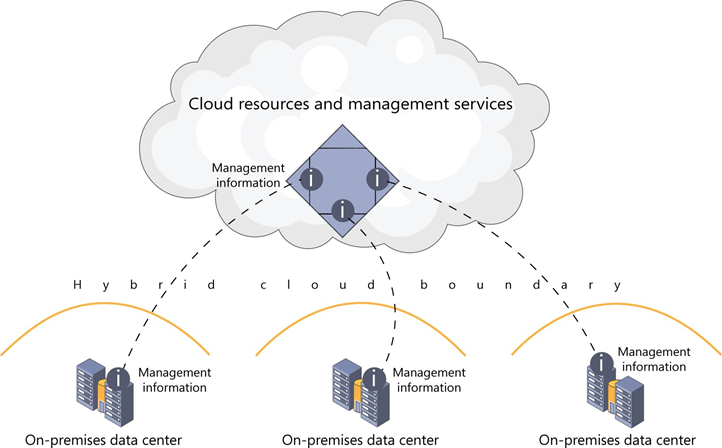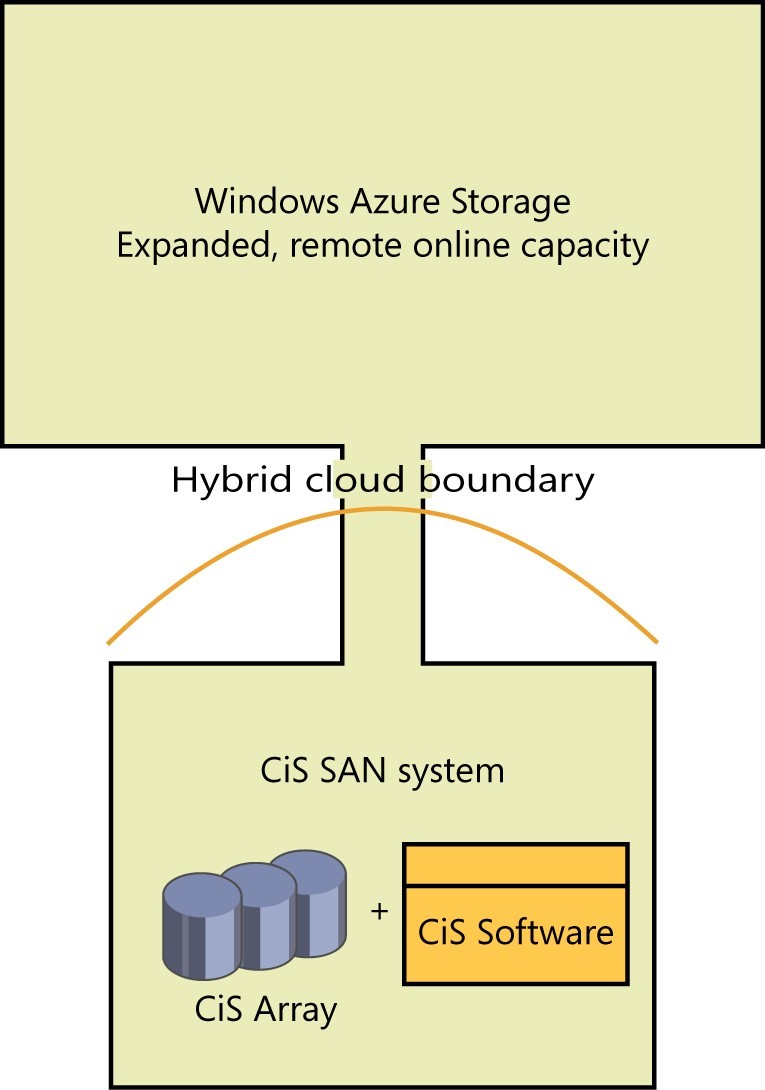Rethinking Enterprise Storage
Recently, Microsoft published a book titled Rethinking Enterprise Storage – A Hybrid Cloud Model – a book that takes a close look at an innovative infrastructure storage architecture called hybrid cloud storage.
Over the next several weeks on this blog, we will publish excerpts from each chapter of this book via a series of posts. We think this is valuable information for all IT professionals, from executives responsible for determining IT strategies to administrators who manage systems and storage. We would love to hear from you and we encourage you to provide questions, comments and suggestions.
As you read this material, we also want to remind you that the Microsoft StorSimple 8000 series provides to customers innovative and game-changing hybrid cloud storage architecture and it is quickly becoming a standard for many global corporations who are deploying hybrid cloud storage.
Here are the chapters we will excerpt in this blog series:
Chapter 1 Rethinking enterprise storage
Chapter 2 Leapfrogging backup with cloud snapshots
Chapter 3 Accelerating and broadening disaster recover protection
Chapter 4 Taming the capacity monster
Chapter 5 Archiving data with the hybrid cloud
Chapter 6 Putting all the pieces together
Chapter 7 Imagining the possibilities with hybrid cloud storage
That’s a Wrap! Summary and glossary of terms for hybrid cloud storage
So, without further ado, here is an excerpt from Chapter 1 of Rethinking Enterprise Storage – A Hybrid Cloud Model
Chapter 1 Rethinking Enterprise Storage
The information technology (IT) world has always experienced rapid changes, but the environment we are in today is bringing the broadest set of changes that the industry has ever seen. Every day more people are accessing more data from more sources and using more processing power than ever before. A profound consequence of this growing digital consumption is that the corporate datacenter is no longer the undisputed center of the computing universe. Cloud computing services are the incubators for new applications that are driving up the demand for data.
IT managers are trying to understand what this means and how they are going to help their organizations keep up. It is abundantly clear that they need the ability to respond quickly, which means slow-moving infrastructures and management processes that were developed for datacenter-centric computing need to become more agile. Virtualization technologies that provide portability for operating systems and applications across hardware boundaries are enormously successful, but they are exposing the limitations of other datacenter designs, particularly constraints that hinder storage and data management at scale.
It is inevitable that enterprise storage technologies will change to become more scalable, agile, and portable to reflect the changes to corporate computing. This book examines how storage and data management are being transformed by hybrid cloud storage architectures that spans on-premises enterprise storage and cloud storage services to improve the management capabilities and efficiency of the organization. The Microsoft hybrid cloud storage (HCS) solution is an implementation of this architecture.
The Hybrid Cloud Management Model
As a subset of hybrid cloud computing, hybrid cloud storage has received far less attention from the industry than the larger dialogue about how to enable hybrid applications. Nevertheless, pragmatic IT leaders are anticipating new hybrid cloud management tools to help them improve their IT operations. Hybrid cloud storage is an excellent example of this type of hybrid management approach that uploads data and metadata from on-premises storage to the cloud, fulfilling the roles for a number of storage and data management practices.
As a management abstraction, hybrid cloud management can provide centralized monitoring and control for on-premises and in-cloud systems and applications. If there are going to be applications and data that span on-premises and in-cloud resources, it only makes sense that there will be a need for management tools that facilitate those applications. Figure 1-1 depicts a hybrid cloud management model where three separate on-premises data centers are exchanging management information with resources and management services running in the cloud.
Figure 1-1 Three Enterprise datacenters exchange management information with cloud resources and management services across the hybrid cloud boundry.
The Transformation of Enterprise Storage With Cloud Storage Serivces
Storage has been an integral part of information technology from its inception and will continue to be throughout the cloud conmputing transformation that is underway. That’s because all the data we create, use, and share has to be stored somewhere if it is to have more than fleeting value. A lot of this data is stored in corporate data centers, but a rapidly growing percentage is being stored in the cloud.
Enterprise storage architectures will need to adapt to this reality and integrate with cloud storage. Just as cloud services have changed the ways we view and use consume data, they will also change how we store, manage, and protect it. It is short-sighted to think of cloud storage merely as big disk drives in the sky when there is so much compute power in the cloud to do interesting tings with it. If is is possible to find information needles in data haystacks using data analytics, it is certainly possible to discover new ways to mange all that data more effectively. For exmple, the implementation of erasure coding in Windows Azure Storage demonstrates how advanced error-correction technology can also be use to effectively manage cloud storage capacity.
But the advancements in enterprise storage won’t all be cloud resident. In fact, many of the most important changes will occur in on-premises storage management functions that take advantage of hybrid cloud designs.
Introducing the Hybrid Cloud Storage Architecture
Hybrid cloud storage overcomes the problems of managing data and storage by integrating on-premises storage with cloud storage services. In this architecture, on-premises storage uses the capacity on internal SSDs and HDDs, as well as on the expanded storage resources that are provided by cloud storage. A key element of the architecture is that the distance over which data is stored is extended far beyond the on-premises datacenter, thereby providing disaster protection. The transparent access to cloud storage from a storage system on-premises is technology that was developed by StorSimple and it is called Cloud-Integrated Storage, or CiS. CiS is made up of both the hardware and software. The hardware is an industry-standard iSCSI SAN array that is optimized to perform automated data and storage management tasks that are implemented in software.
The combination of CiS and Windows Azure Storage creates a new hybrid cloud storage architecture with expanded online storage capacity that is located an extended distance from the datacenter, as illustrated in Figure 1-2.
Figure 2-2 In the hybrid cloud storage architecture, the CiS SAN system accesses the expanded capacity available to it in Windows Azure Storage over an extended distance.
To read the complete version of Chapter 1 of Rethinking Enterprise Storage – A Hybrid Cloud Modeland find out more about StorSimple, download a copy of the book mentioned herein. Or to request a demo please visit us here .

